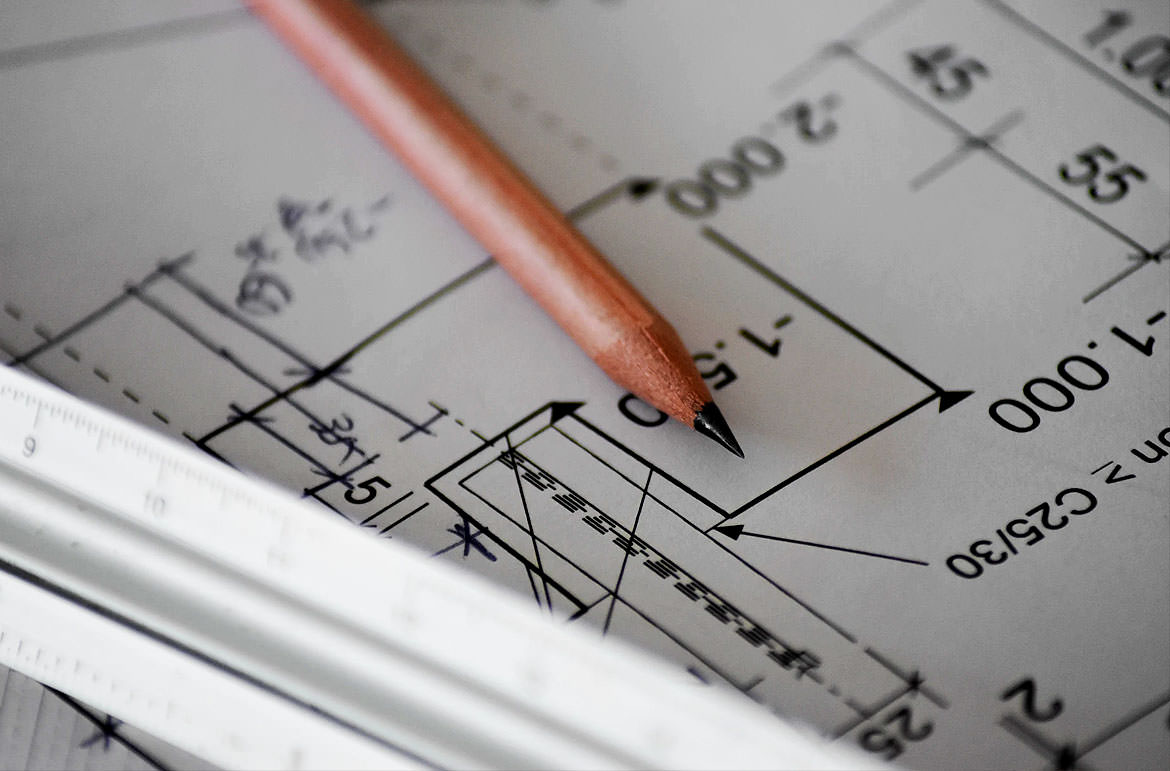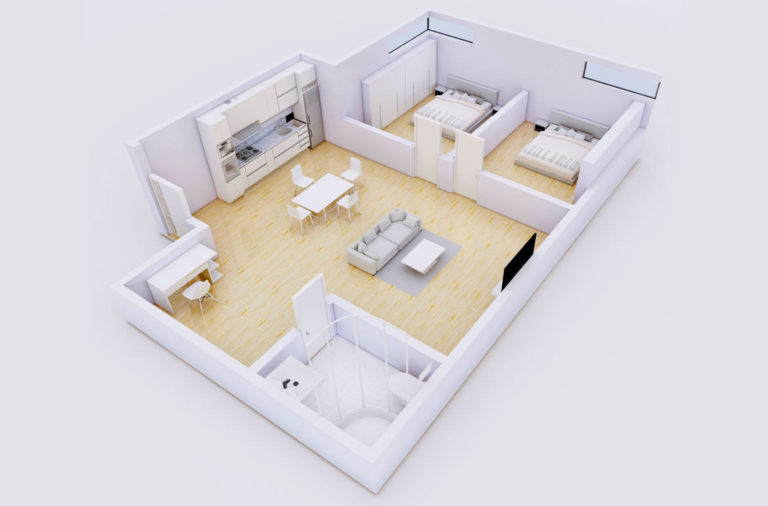
If you are planning on building a granny flat, an important choice you must make is who will be the designer? So, when it comes to Granny Flat designers, what are your choices?
You will need to utilise a drafts-person or architect. A professional to design your plans. Without doing so, it’s hard to achieve an outcome that is both pleasant and fully functional. Plus you will require details that a trained planner has for submission to your local council or private certifier.
Today I will discuss the difference between an architect and a drafts-person, including how they charge for their work.
DON'T PAY A FORTUNE FOR YOUR GRANNY FLAT. Find out how to deal with council and build a granny flat for the lowest cost possible. Learn More.
I will discuss what you should look for in a designer and what a great designer takes into consideration.
Architect vs. Drafts-Person
Architects will charge you more for your plans than a drafter.
So, what is the difference between these professionals?

Great design is hard to conjure. It takes real experience.
Well, a higher level of education and qualification equals a higher price-tag.
But you are about to make one of the biggest financial investments of your life. So, who should you choose to design your granny flat? It’s a tricky subject to discuss, but one that I get asked a lot.
If you try and compare “architect vs. drafts person” in Google, you will find:
- Many sites that outline the benefits of one over the other, or
- Some unnecessary online arguments.
So, what is the ACTUAL difference?
Well, as with any profession, there are those that are great at what they do, and those that are not so good.
So, I’m not going to tell you who you should choose – that choice is yours to make. However, I hope to arm you with all the information so you can make a clear decision.
The truth is that while they perform different roles, an architect or drafts-person can both help you create your granny flat. You’re likely to consult either at the beginning of the development, when creating the plans that will guide your project.
Who you enlist may depend on a few factors such as your budget and the difficulty of your build.
First, let’s look at what it takes to accomplish these positions:
- Architect – To legally use this title, an architect in Australia must be “board registered”, meaning they have:
- Completed a university degree (typically 5-6 years), then
- Completed the compulsory amount of on-the-job experience (at least 2 years), then
- Passed a written exam, then
- Passed an interview exam, then
- Re-registered annually by proclaiming they are fit to practice and are pursuing their career by continually studying and learning.
- Drafts-person – To learn the skills required to draw (document) buildings for this role, you can:
- Study at TAFE, or College
- Learn on the job and perfect them with time.
So, is there a difference between what an architect and a drafts-person actually does when it comes to your plans?
- Architect – An architect is more a specialist in “design”. They also draw buildings very well, but their area of expertise is:
- Making the most of all design options for your site, as can be seen here at a detailed look of architecturally designed granny flats.
- Drafts-person – A drafts-person is a specialist in preparing the drawings for construction
As they are mostly taught to draw, they understand the construction of buildings, so they can show them precisely in their drawings. So, part of their drawing is designing to some extent (especially if they’ve studied at TAFE, as they’ve normally studied some design). However, they will not have been taught design to quite the same level as an architect – it’s not possible in the time they study.
In large prestigious Architect firms, they will hire drafts people to complete the drawings for what the lead architect envisions for larger scale designs.
To sum it up, an architect may know more about “problem-solving” if you have a tricky site. Want to make the most of the environment, such as the use of passive solar or innovative design.
But don’t expect your drafts-person to know how to design. Drafting and designing are different. Drafting is drawing.
Designing is an investigative process involving testing, creating and checking – basically, problem-solving with unlimited possibilities in certain situations.
I’m not saying that a drafts-person cannot necessarily design – some are great designers however their traditional training won’t focus on design such as an architects training. And it’s a skill-set they may not have.
Please know I am not judging anyone here! Just listing information for both professions that is accepted by-in-large.
Choose a designer with the right skill-set for your requirements, and you’ll get a great result.
Whatever your choice, make sure design is the focal point. Your design is the beginning – and finish – of your entire development.
So, ensure you are happy with the design – this is the point where you decide how:
- Your granny flat fits into your life.
- Expensive it is to build and maintain.
So it’s important to note that the design is where you take your budget and make the most of it.
An investment such as a granny flat should always end up being worth more than the cost.
It is also worth asking how much value your granny flat will add to your property by a real estate agent.
So you can pass on this information to a designer especially if you plan on selling once your construction is completed.
Cost of Granny Flat Designers
Whether you hire a drafts-person or an architect, you should get at least 3 quotes.
Then, to compare their quotes, you should ask them to draw a preliminary sketch.
You can take these to a building estimator or other expert, so they can advise you how it well it will work within your budget.
The cost of hiring a drafts-person:
- The average cost of drawing and drafting is roughly $50 per hour, however this can range from $48 – $61 per hour. Factors that impact these costs include:
- Timeframe – Most charge by the hour, so it goes without saying that the longer a drawing takes, the more it will cost you. Generally speaking, the more complex the work, the longer it takes to complete.
- Per state – A drafts-person in NSW, VIC and WA have the same average rate of approximately $50 an hour.
Yet, in QLD, this rate is roughly $55/hr, and in SA, $57.50/hr. So it is worth noting you may be charged more in those States.
- Location
- Reputation
- Experience – An architect fresh out of university might charge roughly $50-$77/hour. Those with more experience will charge up to $100-$250+/hour.
Why is there such a difference in price between an architect and a drafts-person?
Generally speaking, an architect will work with you differently than a drafts-person. This difference can take longer.
Such as:
- They’ll spend longer on design – Their speciality is design, so there is a lot more exploration during this phase. This includes questioning you and what you want from your development.
- They tend to do more drawings – As they feel so strongly about design, they communicate this through their drawings to get it built.
More time = more money.
*Please note – All prices mentioned should be used as a guide only. They are subject to change depending on your location and fluctuations in the market.
What to Look for in a Great Designer
Choosing a designer can be difficult but is one of the most important decisions to get your best development.
So, here’s some tips on how to choose a great designer, as they are worth far more than the fees they charge.
- Have them do an initial design concept for you – Pay for them to sketch up a drawing. This way, you can walk away if it doesn’t meet your expectations.
- Do your research – If you find a designer you like, take some time to do your homework:
- Get to know them – Either meet them face-to-face, speak on the phone or via email, whatever you prefer.
- Ask for references – Either from them, or from mutual acquaintances. Then check those references.
- Ask to visit their previous jobs – Projects that are like yours, one under construction, one recently constructed, and one 5-10 years old.
- If they’re an architect, make sure they’re registered with the Board of Architects.
- Check their performance records with your State’s licensing authority.
- Trust your instincts – If you’re hiring a designer, this person is going to be up-close in your personal life for a while. So, get a feeling as to whether the designer is someone you want in your life or a period of time by asking yourself:
- Do you feel as though you can trust them?
- Do you feel that they will be honest with you, rather than just telling you what you want to hear?
- Can they talk to you about their process, their expected timelines, and methods of communication?
- Do they make you feel safe and supported, confident in your project? As if they have experience?
- Do they have good communication skills? Do they listen to you and show they’re listening properly?
- Do things feel organised?
- Do you think they want to get to know you, the way you choose to live, and the way you want to design your granny flat?
- Do you feel as though you can give them feedback without them taking it personally?
- Instead of just putting you in the same box as every other client they’ve worked with, creating a similar result?
- Guidance – You hire a designer for their knowledge, experience, and expertise. So, they should guide you between where you are now and where you want to get. This builds on points I mentioned before, but you really should see that they want to meet your needs. Such as, they try to find out information from you and share information with you, such as what their expectations from you are. Then, they should be able to give you feedback on your vision and how achievable it is.
- Respect of your budget – They should find it a privilege to be assisting you with your design. Showing they care about you spending your hard-earned money also shows that they will tell you what you need, not want, to hear. The red flag is plain to see – if your budget does not come up in conversation, chances are they aren’t considering it.
- They have experience – They will be working closely with your Council, so it’s important they know the regulations. You can test this by learning the rules for your area, then see if they know them by asking a few questions. If they do not know the answers, they are probably insufficient in their experience.
If you’re still not sure – Nothing says that you must hire 1 designer for your entire project (unless you sign a contract which states this).
If you’re unsure whether or not they will be the right designer for you, you can always negotiate partial services with them.
If you do sign up for a complete service, ensure that the agreement you are signing allows you to:
- Terminate at any time, whilst still using any work that you have already paid for and they have handed to you.
A great designer will respect the trust you have put in them, and in return you will value the expertise they bring. What is happening is a trade of value and building of trust, It’s a great way to see this.
What Will a Great Designer Take into Consideration?
Design is not about ‘pricey’, luxurious, ‘things’.
It more about your personal likes and dislikes, as well as the way something functions and feels. Great design is design that will make your granny flat and life work – more convenient, comfortable, fun and beautiful.
A great designer, from the first consultation, should work closely with you to find the solution to your wants, needs, property and budget.
A few things they should take into consideration to make your granny flat plans a reality are:
- Your budget & site – Design options and the processes involved, i.e. surveying, civil, structural implications and how this impacts your budget.
- Construction time.
- Your orientation & positioning of windows – To maximise natural sunlight, solar and thermal efficiency.
- Wall height – Standard internal wall height is 2.4m – 2.7m. The latter will cost roughly $2,000 more but will give a sense of space.
- Location of the bathroom and kitchen – Placing them closer together reduces the length of plumbing and drainage lines, meaning a cheaper build.
- Access – If necessary, ramps, bathroom rails, and hallway widths to allow for easier access for the elderly and people with disabilities.
- Flooring – If the granny flat is going to be occupied by children, when choosing tiling for wet-areas, consider installing non-slip tiles.
What a Designer Will Need from You
You should be able to give your designer your survey report and engineering drawings, so they can start working on creating construction ready plans.
- An Engineers Report – If building on piers, this covers a soil test, specifying how big your concrete footings must be. If building on a concrete slab, it confirm these details, such as reinforcement and the strength of concrete needed.
- A Land Survey – Shows levels of your block, locations of services.
By providing these, the designer has done sufficient investigations and you’ll have minimised the risk of incurring extra costs for things such as:
- Site preparation.
- Bushfire Attack Level (BAL) requirements.
- Further engineering needed because of Geotechnical reports.
- Sewerage, plumbing, or electrical upgrades, etc.
What Will a Designer Ask of You?
- Your budget – Now you’ve done some research it’s time to set yourself a budget.
- Your wish list – The desired overall outcome of your granny flat, such as the number of bedrooms, outdoor areas, etc.
- Building contract & approval – Once everything is in place, a contract will be prepared for you to sign. Council applications will be submitted, information on which can be seen in detail here for submission to council.
- Make your selections – You’ll now be asked to make an infinite number of choices, which is where your budget will come in very handy. You’ll be asked to choose floor coverings, paint colours, light fittings, bench tops, doors, a shower head, taps, kitchen appliances and more. When deciding what goes where and with what, it may be handy to look at how I took note of my costs and set my budget.
What Makes a Great Granny Flat Design?
A great granny flat design is a contemporary design to suit your individual lifestyle and needs.
They generally include:
- Windows and doors for natural light.
- Clever storage and space saving solutions.
- The use of landscaping for privacy and separate outdoor spaces.
Conclusion
A great designer is worth far more than their fees will ever cost you. A drafts-person will cost roughly $50/hr, though this can vary depending on your state.
They may have a 2-4-year degree, and with this knowledge they prepare drawings which are used to build your granny flat. As they are taught to draw, they are proficient in construction-ready design drawings.
In most cases, they do not have the comprehensive training to go beyond making minor changes to your plan, or “problem-solving”. An architect can cost, on average, $60/hr. They typically have 5-6 years of higher education.
Whilst a drafts-person is trained primarily on drawing and technical issues, and architect is trained artistically, technically and holistically. So, they are better able to see the entire scope of your project and design and meet all your needs.
They consider your land, the flow of the layout, its’ functionality.
Architects have years of university education behind them, but some drafters may be enough for your design.
There are some reasons for choosing an architect instead of a drafter:
- If you want to build a complex structure, they may be more qualified.
- If you need someone to manage your project from start to finish, they may be a better choice.
When choosing between an architect or drafter, choose a professional who specialises in the type of work you need done.
Remember, this is simply an exchange of value.
If you feel like the designer doesn’t value you, your feedback, your vision… it’s not going to work.












